Guide for unlocking locks
Video instruction on hacking the lock with a hair clip
The concept that this method is based on the tumbler, so that as you pick one, it will stay in the unlocked position. All you have to do is just go down the line of pins and push up on the one that is currently stuck. You will be able to tell by how much force it takes to lift a pin, which one to push up on next. Once a pin is picked, you will hear a click of a noise signaling for you to move to another pin. Be sure to keep constant rotational pressure on the lock, because if you do not, then the pins will spring back down and you will have to start over again.
Cylinder locks

To date, the most common way of hacking a lock with a cylinder mechanism is to break the cylinder mechanism in half. In the photo you see already the result of the breakdown of the cylinder mechanism.
And the technique itself is as follows. The thief searches for apartments with wooden doors and locks with a profile cylinder, as a rule, these are accessible to all KALE, APEX, etc. How much they cost, so much and take care of the apartment. Then the decorative cover covering the hole in the door is loosened, where the cylinder mechanism of the lock was inserted. If to the right and to the left of the cylinder there is a space of 5 mm, this is enough to grasp the protruding part of the cylinder with nippers or pliers and to swing it hard to the right and to the left. Everything, the cylinder broke in the central part and it must be pulled out of the lock. Now you can unlock the lock with any hook. In terms of time it takes 2-3 minutes. If the door was done in good faith and the cylinder mechanism snugly enters the door, then the hole is quickly widened with a screwdriver or chisel, this does not work. A little more difficult if the door is metal, but it will not hold the thieves any longer.
Maybe someone will say, but where is the way out? He is. And know that dozens of people a day suffer from theft, only because of the dishonesty of the manufacturers of locks and profile cylinders. The output is very simple and well known. The photographs show and without commentary how to strengthen the cylinder mechanism of the lock. Simple, cheap and reliable. I do not think that the metal plate, bent by the letter "P" with six holes, will greatly increase the price of the part. I just think that producers do not respect you and keep you for fools, but you all buy such locks, encouraging them to continue production of obviously unfit products.
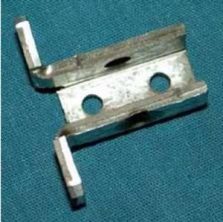
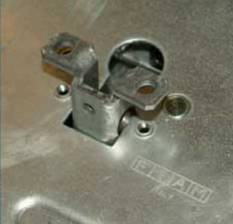

Test
No matter how much they write, so that they do not put Turkish castles, it still does not reach people. On the forums are discussed locks KALE, ORNEK, TURKEY, FAIN for good reason. They stand on the door, they are sold and bought. What is the cause of the demand? I think the following components: low price, red color of the lock box and shiny bolts. People like the color red and what glitters.
But seriously, I show in the pictures how to hack any of the above listed models of locks. In the photos there will be one of them - KALE, but others are the same. I checked it myself.
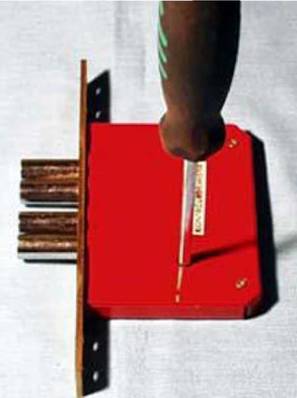
In the first photo, the appearance of "everyone's favorite castle", on the second, the simplest version of cracking with a Phillips screwdriver, it's true the screwdriver must go pretty deep into the keyhole. Strangely enough, but this castle was really unlocked with this screwdriver without much effort, which surprised me a lot. I was preparing for serious work. And so another castle was unlocked here such a "roll".

You see, the "roll" in the cross section is square, it is sharpened under the cone, it is convenient to insert it deeply into the key hole, the handle bent facilitates the locking of the lock by a 90-degree handle, and a metal rod can be inserted into it to increase the lever. But I prepared very seriously. I still had two more rolls made on specials. Order, specifically for breaking locks with a cylinder mechanism with three rows of pins. The working part of these "rolls" was thermo-hardened. I began to look for a suitable lock. The Turkish are all broken, but there is also a KERBEROS lock of Russian manufacture, with a cylinder mechanism with three rows of pins made in Italy.
Immediately surprised that the lock of a low price group, but it is made very soundly, massive deadbolts made of heat-strengthened metal, outriggers of 40 mm, the crossbar stand has protection against drilling, the design is simple and reliable. Well, I'll break, although a bit sorry, the castle looks good.
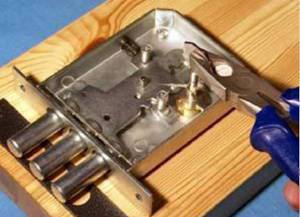
I inserted the key from the other lock into the lock and tried to turn it with pliers, did not work, broke the key. The mechanism of the lock did not suffer at the same time. The cross screwdriver was immediately put aside and decided to test specially made "rolls". The result of the tests you see yourself.
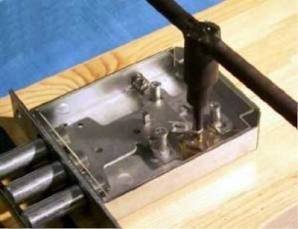
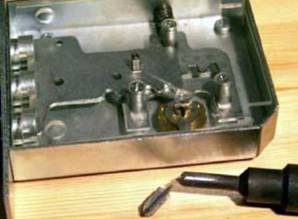
I did not have a device for measuring the force with which I tried to turn the cylinder mechanism of the lock, but, believe me, the efforts were great. As a result of the tests, I broke both the "rolls".
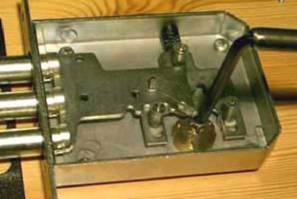
This device did not justify itself either. In search of a reliable cracking tool he took a tetrahedral file, sharpened the end under the cone on the emery, drove into the hole for the key to failure, attached the lever to the file and turned it in the cylinder mechanism. However, the castle was not unlocked. After that, by studying the cylinder mechanism it is established that the file cut off the projecting corners and started turning, but the pins were not touched, because Drowned deep enough. The lock is still unlocked by the key. If there is an "unbelieving Thomas", visit St. Petersburg, Primorskiy pr., D.29, I installed this lock on one of the offices.

Even after all the efforts, the castle was not unlocked. Cylinder mechanism of the lock, as you can see, almost did not hurt, the outer projecting parts broke, but this did not affect the operation of the mechanism. For the given lock the above-described methods of breaking were powerless.
Conclusion: not all locks of this species are the same. I hope that the manufacturers of the KERBEROS lock were not very offended, that I put it on the test in a row with the Turkish.
The essence of the method is the following
The essence of the method is as follows. If you leave the key in the lock lock on the inside of the door (and as practice shows, the majority comes in), then with the key left in the lock, you can easily take a mold with plasticine or a similar material. And the next day, when you leave for your business, the thief will quietly open your door with a duplicate of the key. At the same time, the police, who arrived on your summons on the fact of burglary, states that the lock does not have any damage and is opened by "selecting the key". Experts know that it's almost impossible to just pick the same (other) key to the normally made lock locks. The actual number of combinations of lock locks Cisa, Kerberos and some others exceeds 200 million options. Thus, it is impossible to bring a car with the car, and it is very difficult to fit the key to the lock in place, although there is a method of "deforming fingerprints". This method is complex and not every thief is available in complexity and duration. Of course there are locks issued with violations of technological manufacturing modes, with increased gaps in the code slot between the tooth of the toothing and the crossbar. There are locks deliberately released with the same combinations of options on the keys due to the low level of technological equipment and the desire to reduce their costs at cost. It is not difficult to find a key for such a castle. But thieves, in addition to the existing unlocking of locks, have developed new reconnaissance-combining places of theft with the removal of a fingerprint from the key. So how do thieves open the castle without leaving traces on the castle?
This method requires clay, a little liquid oil, a metal plate about 10 cm long, about 0.5 mm thick, a width equal to the width of the key beard, and for example a clerical awl. At my fingertips there was a metal ruler (see photo 1), which I finished on the emery to the right size and for not having sewed, cut part of the electrode.
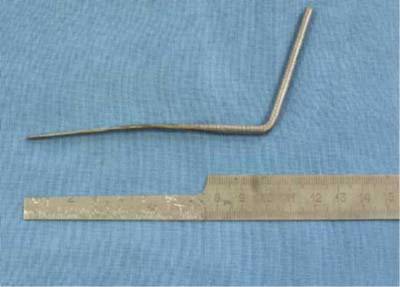
Photo 1. The tool with which you can make a cast from the key left in the lock from the inside of the door.
Technique for making casts from the key left in the lock on the inside of the door:
- On the metal plate, it is necessary to roll up plasticine, in order to obtain a layer about 1-1.5 mm thick.
- On top of the plasticine we lubricate with oil so that it does not stick to the key of the key.
- We look into the keyhole and see the key, working (raising or lowering) the awl through the keyhole to the right or left side of the key beard, slightly turn the key, so that a sufficient space is left to push a plate with plasticine.
- Push the inside of the lock under (or above) the key of the key plate with "plastered" on it with plasticine.
- We remove the awl, the key returns to the horizontal position under the influence of the springs of the lever and the key of the key is pressed against the clay, leaving its imprint there.
- To get a good impression you need to press the key again with the awl with the key to the clay, acting on the right or left side of the key beard, as you prefer.
- After the key beard was pressed against the clay and the impression was made, the same procedure is repeated with respect to the second key beard.
And if we know a manufacturer who produces locks with a symmetrical combination, then one impression is enough, since The second half of the key beard is obtained automatically by direct or inverse symmetry. On the keys of the company Mottura, Sekureme, Atra and others and their Russian counterparts Class, Gerion, Chisa-Elbor, where the construction of the code mechanism of 6 double hands with a double key bead is used, it is enough to remove the impression once, since always having received one impression, It is easy to obtain and second by the inverse symmetry. With a certain skill and training, the time taken to take the impression takes less than a minute.
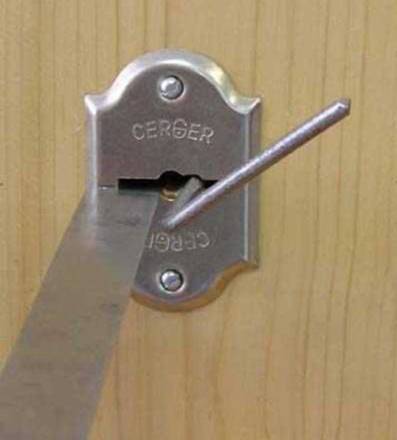
Photo 2. The photograph fixes the process of removing the impression from the key. In this experiment, you see the CERBER lock. It was on him that the thieves who were caught were specialized. Manipulating the right hand with an awl or other thin solid object, with your left hand, slip the plate with plasticine.

Photo 3. In the photo you see a clear impression that you can make a key with, without having to have the right key blank and file on hand. This procurement is easy to buy in any key workshop for a penny.
If the key is symmetrical, in most of all locks, then it is enough to remove the impression once from any half of the key beard, if the key is not symmetrical, then you must shoot the impression from two halves.
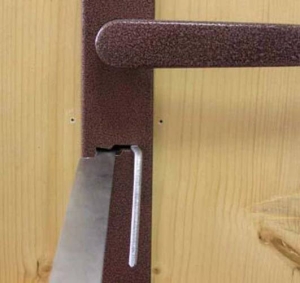
Photo 4. In the photo you see the process of making an impression from the Mettem lock, where a non-symmetrical way of cutting combinations is used.
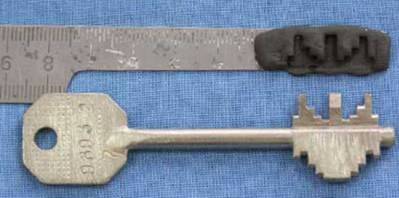
Photo 5. In the photo you see the resulting impression. Because The key is not symmetrical, it is necessary to take a cast from the other half of the key beard.

Photo 6. In the photo you see the process of making an impression from the lock Class.
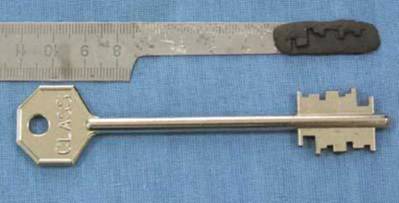
Photo 7. In the photo you see the resulting impression.

Photo 8. In the photo you see the process of making an impression from the Moyig castle.

Photo 9. In the photo you see the impression. Because The key is not symmetrical, it is necessary to take a cast from the other half of the key beard.
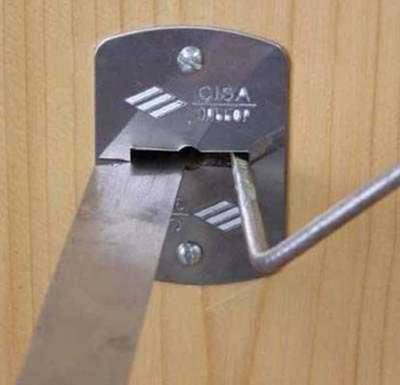
Photo 10. In the photo you see the process of making an impression from the castle of Cisa-Elbor.
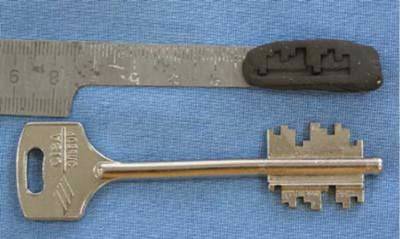
Photo 11. In the photo you see the resulting impression.
Theoretically, in this way it is possible to take a snapshot from the key of any lock with a through hole that is not protected (not closed) for a key. Avoid thefts committed in this way easily. It is enough not to leave the key in the lock at all. Came, closed the door, and MUST pull the key out of the lock. This little trick and knowledge will help you avoid big trouble. As I already said: "Do not show the key to anyone, do not leave it without supervision, do not leave the key in the lock."
Convertible
Now I will talk about ways to unlock the lock locks with the help of a "roll". Convolve (thieves' slang) is a special device for breaking the locking device of the lock in order to move the crossbars to the unlocked position. About the rollers for breaking the cylinder mechanism of the lock, I already wrote, and now it's the turn of the lock locks.
At us in the market there was a huge quantity сувальдных locks, both domestic, and import manufacture. Independently to understand which of the locks is better, it is very difficult, if you are not a specialist in this field. To protect you from thieves and save your money when buying a lock, I write these lines.
In the laboratory, the following castles were tested: Cisa-Albor, Class, Cerber, Mottura, Kerberos, Mettem and Senate. But, in order not to load an article with illustrations, I broke it into two parts.
The experiment began with the fact that the turner Uncle Vasya, with the help of a mat and a lathe, in just half an hour and a bottle of vodka, made a roll on a sketch. That's actually he (svertysh, not Uncle Vasya).

Material of which is made of coarse - simple steel Ст.45. The thickness of the rod was chosen to be 8 mm. For durability. But if the svertysh "harden" (heat-harden), then the rod can be made thinner, although, running ahead, tests showed that its strength is enough with a margin. The technique of possession is as follows. The key for the key is drilled with a drill 8 mm, then a crate is inserted into it and rotated with a spanner, if necessary, a lever can be used. In our case, we used a torque wrench to determine at what effort the unlocking or breaking of the lock occurs.
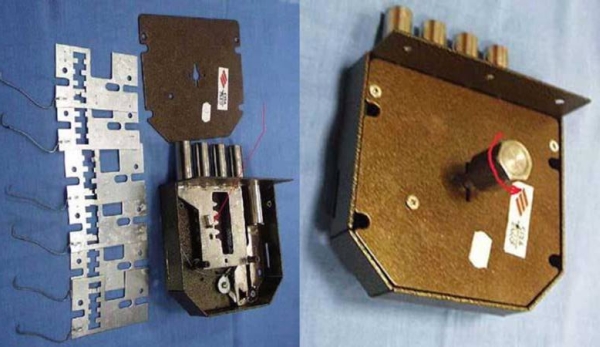
The photos show the sequence of actions. The castle Cisa-Elbor (article 1.06.61) was exposed to a curl on the shank of the bolt. With an effort of 10 Nm, the crossbar strut broke at the fastening point. The lock is loosened by the one-sided arrangement of the screed with respect to the shank of the bolt and the fact that the crossbar is welded to the shank of the bolt. The next three turns take place without effort.
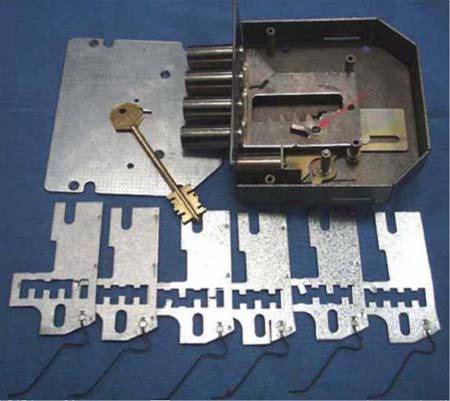
Castle Class. The picture is the same: with an effort of 10 Nm, the crossbar strut broke in the place of attachment (welding) and the lock was unlocked without effort. Disadvantages of the lock - a one-sided arrangement of the screed with respect to the shank of the bolt and the fact that the crossbar is welded to the shank of the bolt.
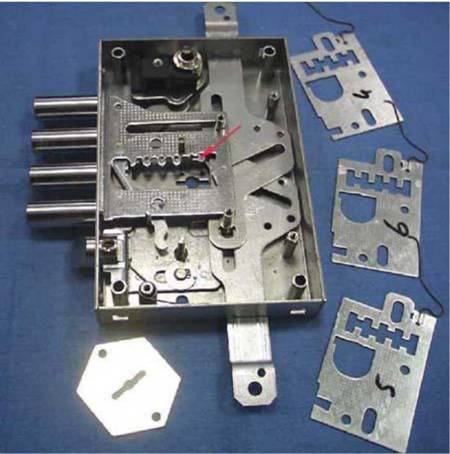
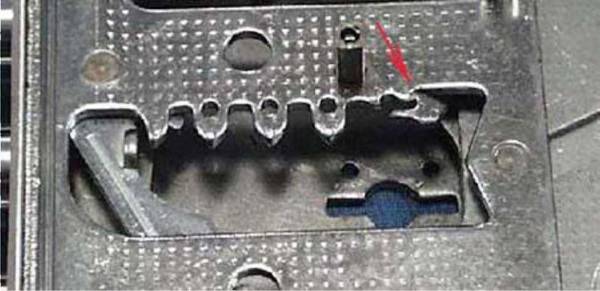
Castle Mottura (article 52.771). At an effort of 10 Nm, the shank of the bolt shank collapsed due to "loosening" holes. The lock remained locked. However, you will have to change the lock to a new one. Service Mottura in Russia is not, sales of spare parts are not made. Taking into account the size of the Mottura castle, the MES "Bulgarian" will turn the entire door on an area of almost half a meter square, which will add to the cost to the owner almost as much as with ordinary theft. In general, an effort of 10 Nm is not enough for the reliability of the lock, especially for such money.
The castle of Kerberos (article 111.11.011). For the tests, five locks, previous modifications and now produced, were taken. All of them behaved with dignity. None of the locks was unlocked. Although I "tormented" castles mercilessly.
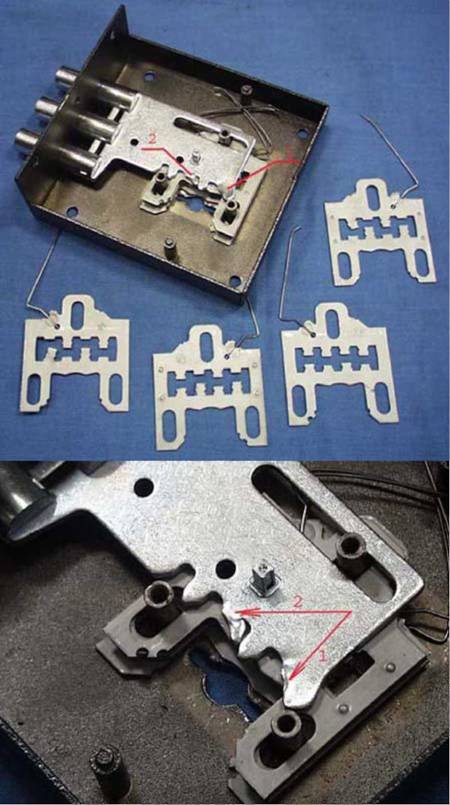
Initially, he closed the lock four turns. With an effort of 56 Nm, the extreme tooth of the comb of the shank of the bolt bent, see the photo mark 1. The lock remained locked. I disassembled the castle. Suvalds practically did not suffer, it can be seen in the photo. The crossbar is securely pressed and not deformed. I decided to check, and what will happen if the lock is closed for two turns of the key? He assembled the lock, inserted a roll, turned it. At an effort of 42 Nm the tooth of the comb of the shank of the bolt was deformed, see the photo mark 2. The lock remained locked. Advantages of the lock is that the toggles are located on both sides of the shank of the bolt, the crossbar is securely pressed into the shank of the deadbolt and is made of thermally-hardened metal.
From the tests carried out it is clear that they will reliably protect your apartment from a thief with a roll, only locks Mottura and Kerberos. At the same time the price of Kerberos is about 15-20 euros, and the cost of Mottura is more than 200 euros. Service of the castle of Kerberos in every city of Russia. Mottura is good, but in Italy. In the future, when the doors are opened by rescuers of the Emergency Ministry and the lock is replaced, the area of the door damage in the case of the Kerberos lock is almost three times less than the area with the Mottura lock. Accordingly, three times less is the expense of repair and replacement. At the same time, Kerberos clearly (in FIVE WITH HALF TIME) outperforms Mottura by the force of counteracting the coagulation of the comb (56 Nm at Kiereros, against 10 Nm at Mottura).
To write this article, I was enraptured by a series of apartment thefts, where locks were unlocked with the help of such a roll. Thefts are not disclosed and the thief is still at large. Solve yourself how to protect yourself from theft, using simple and easily accessible thieves' devices, known from time immemorial to all thieves. In the next article, I will explain the thieves' technique of unlocking lock locks with the help of a roll on examples from life.
Continuation to the first part
If in the first part I demonstrated that many locks can be opened with the help of a roll ("the bear", "the collarbone" is the one who likes it more) in the laboratory, so to speak for cognitive purposes, but now I have taken examples from life.
It's no accident that they are castles "METTEM". The quality of the manufacture of the castle as a whole and its individual parts in particular allowed the thieves to easily enter the apartments with the help of a simple device - a roll. The thieving technique is different from the one I described in the first article. The thief does not drill a hole in the keyhole; This creates noise, even if the drill is on batteries. The thief comes in easier. It expands the opening of the keyhole with a mount, making it sufficient to insert a roll. And then he turns the coot and opens the lock. All this takes about two minutes (tested experimentally).
Why is METTEM good for a thief? Everyone. Namely:
- The body (box) of the lock is made of thin steel, which makes it easy to expand the keyhole.
- one-sided arrangement of the arms.
- weak fastening of the crossbar. By the way, I note that the crossbar is made of "raw" (sorry, critics for the term) steel, i.e. Not thermo-hardened.
But I will be honest and unbiased until the end. It was so easy to unlock the lock that the hole for the key was round, with a diameter greater than the width of the key hole in the lock. This is a big minus to the "door" (these are the people who make us doors). And this is a minus not just one separate office for the production of metal doors, but rather a rule, since I have a "wagon" of locks opened in this way.
And so illustrations.
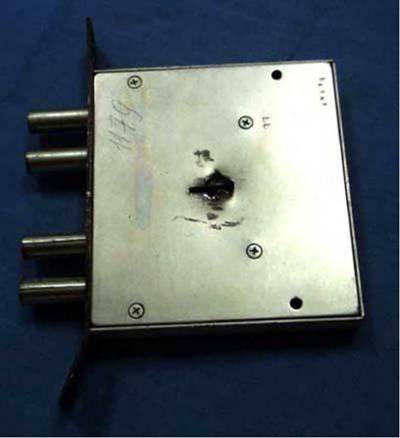
You see the lock METTEM article 3VSP-06. For particularly cautious critics who write that I specially break locks and frighten people, I note that in the upper left corner of the castle you can see the number "1179". This is the number of the examination, which was carried out for this castle in the 25th department of the ETC of the Central Internal Affairs Directorate of St. Petersburg. I made this inscription so as not to confuse the locks (there are a lot of them).
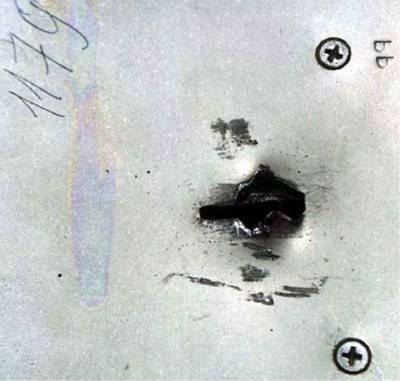
An enlarged image of a well for a key. The hole is expanded enough to insert a roll.

After removing the cover of the lock box, it is seen that the crossbar strut is broken at the attachment point. Red arrows and numbers marked:
1 - broken crossbar strut.
2 - hole for the crossbar.
In the lock there is a thick grease, but one is already covered with a thick layer of rust (in the photo, the upper right).

An enlarged image of the fragment of the previous photo. The shank of the bolt shank was not damaged.
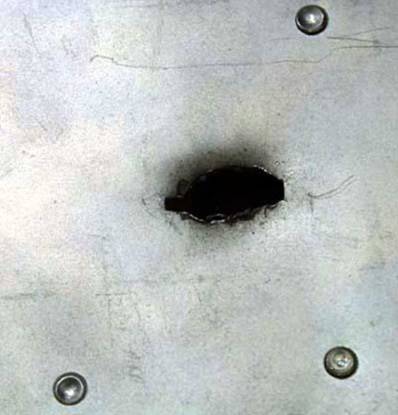
And this is a well for the key of another lock METTEM article 3VSP-2T 3CHZD. The picture is similar to the previous one.

More complicated lock design, but the result is the same. Mark 1 - the crossbar stand, mark 2 - the place of fastening of the crossbar.
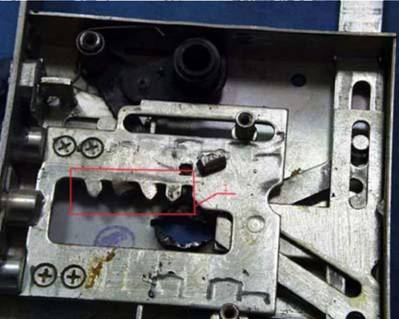
An enlarged image of the fragment of the previous photo. Red marked bent comb shank bolt.
For the rancor, I say that I do not teach thieves to "open" locks, they can do it themselves. And by telling and showing techniques of criminal unlocking and breaking of locks, I teach honest citizens how to protect themselves. If at least one person after reading my articles thinks about the safety of their apartment and puts a good lock in a reliable door and surrenders the apartment under the protection of an Extraordinary security guard or a similar private security company, then he will save his nerves and money, and the police will have less work and I did not waste the money Their personal money and time. These articles I regard as the prevention of violations, in particular apartment theft.
Drilling
I bring to your attention some examples of criminal "opening" of locks. One of the simplest methods is to drill the cylinder head pins or the bolt shank in the lock locks. Factories making locks take measures against this, such as:
- Covers for the cylinder mechanism of thermally-reinforced metal (for example, locks "ABLOY").
- The shank of the bolt shank is of thermally strengthened metal.
- Insert the steel ball into the end of the post of the shank of the bolt in order to move the drill to the side.
- The mounting plates of locks made of heat-strengthened metal are manufactured.
However, there are also ways to bypass protection. For example:
- Lining from thermally-hardened metal can be drilled with special drills.
- The protection of the bolt shank post with the steel ball can be bypassed by drilling the hole at an angle to get into the bottom of the post.
Now, high-strength drills have appeared on the market. The tests of these drills were carried out in the laboratory of the factory "Locks and Hardware" . Here is an illustrated example of drilling with such a drill.
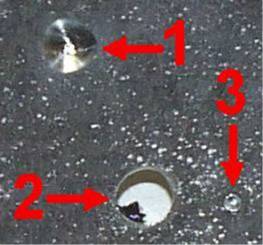
Armored plate based on nickel-manganese alloy, thickness 2 mm.
1. Drilling with a high-strength drill bit within 2 seconds.
2. Drilling for 5 seconds. - Through-hole.
3. Drilling with a conventional drill DIN 338, the drill "sits".
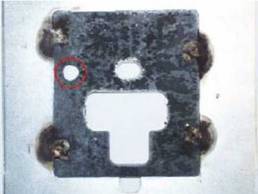
Mounting plate of the Italian lock with the element of protection against drilling out of heat-strengthened steel 2 mm thick. Drilling with a high-strength drill bit for 5 seconds. - Through-hole.
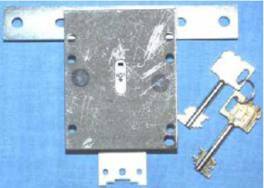
Safe lock with protection against drilling from a heat-strengthened steel plate 1.5 mm thick.
Before drilling.
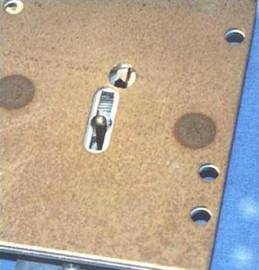
Safe lock with protection against drilling from a heat-strengthened steel plate 1.5 mm thick. After drilling with a high-strength drill bit for 4 seconds. - Through-hole.
There is no obstacle for thieves?
Well, you installed good steel doors and reliable locks, and you think that you can safely leave the apartment unattended? Do not rush to entertain yourself with the thought that thieves will not reach you. Consider several ways to enter the apartment, bypassing the front door.
Method 1.
Do you live on the first floor? Then you do not need a door, you can go through the window. In the window of the thief penetrates for a few seconds, no one is afraid and not embarrassed. Because of the arrogance of criminals, everyone thinks that a man climbs to his home, forgetting the keys or breaking the lock.
If you live on the last floor, then you can jump from the roof to the balcony or go down the rope to the window sill and enter through the window. This at first glance seems complicated, but in fact it's a trifle. And no one will see. How many people go with their heads up?
There are several ways how to break glass silently. The simplest, which has been used for a long time, is to paste a wet newspaper on the glass and break the glass. Fragments stick to the newspaper and do not crumble. Now they just stick a self-adhesive film and squeeze out the glass. A few seconds of work and no noise.
On the second floor you can climb on the grill, installed on the windows of the first floor, or, from the visor of the entrance. In my practice, there were cases when thieves climbed to the second floor on the ladder, which they carried with them. It often happens that a thief, coming down from the roof to the balcony of the last floor, descends downwards, hanging on the balcony (with an increase of about 180 cm, his feet will just reach the railing of the lower floor). There are examples when thieves climbed up and down from the lower balcony, standing on the railing and reaching out to the upper balcony, but good physical preparation is needed. The first floors are most loved by thieves, because Even an unqualified thief can easily enter the apartment if there are no lattices on the windows. It is enough to walk around the house in the evening, to see where the light does not burn on the first floors and when it's quite dark, throw a stone at the window to break both glasses and then hide. His accomplice from outside will look after the reaction of neighbors, then - whether the police will come and, if everything is quiet, podsadit friend in the broken window. Conclusion - the grilles will add to you a share of tranquility.
Method 2.
Do you live not on the first and not on the last floors? Do not relax. If you have strong doors, then you can break the door of a neighboring apartment and move from your next balcony to yours, and then to the apartment. Climbing to the neighbor from the top floor, it is easy to descend to your balcony.
Method 3.
This method is applicable in block houses, where a garbage duct runs along the stairs and from the site there is a window to the street, and so, from this window it's very easy (less than a meter) to go to the window sill of your kitchen. And it can be done on any floor. In St. Petersburg, these houses are called "Ship" (because of the great length, more than 20 entrances). The method is very common.
Method 4.
A somewhat exotic way, but nonetheless, existing. Having penetrated into the neighbor's apartment, less fortified, break through the wall into your apartment. In my memory, the case when the thieves rented an apartment in the neighborhood with a collector of antiques and quietly prepared the wall for a break. As the victim later said: "I heard a noise, but I thought neighbors are doing repairs." The antiquarian was away for an hour, the wall fell, and the thieves stole a valuable collection.
Method 5.
From the basement you can break the floor into the ground floor apartment.
Method 6.
From the attic of the house the ceilings of apartments on the last floors are broken.
In continuation
In continuation to the first article on methods of criminal opening of castles. In the previous article, the examples showed how to easily and quickly drill the armored pads on locks of eminent firms with the help of drills DIN 338. Below I will tell you how to open almost any lock, by examples of the famous locks of the firms KALE, MOTTURA, CLASS, ELBOR.
The theory of preparation of burglary by drilling is as follows. Go to the store, buy the most common locks of the above companies. Next, install the lock on the door (say in the kitchen) and start to study it. Having dealt with the mechanism of the lock, make a stencil (a simple tracing paper is suitable), on it note the points of fastening of the lock and the keyhole. The binding is made to the keyhole; It is always visible from the outside of the door. Next, on the tracing paper, mark the point where it is necessary to drill a hole.
If it is a lock with a cylinder mechanism with one row of pins, then for its unlocking it is necessary to drill out the pins of the cylinder mechanism, below, using the example of the KALE lock, you will see how it is done. Typically, this hole is below the keyhole (if the pins are located below). A drill with a diameter of 5 mm is enough. After the hole is drilled along the length of the cylinder mechanism, hook or clip, through the keyhole, lower the pins, then insert into the keyhole any key (screwdriver) and unlock the lock. Elapsed time is 1.5 minutes.
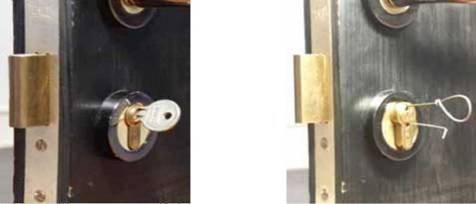
If it is a lock with a cylinder mechanism with three rows of pins, then it is enough to make one hole, raise the stopper and push the bolt off the hook. The stopper is in the depth of the cylinder mechanism, it is necessary to insert a similar key as far as it will go. Elapsed time is 1 minute.
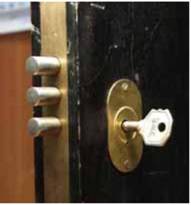

If it 's a consignment lock . Drilling with a conventional drill to the point of attachment of the stand to the shank of the bolt (on the template this place is marked, put a pattern on the keyhole and drill). Drill the rack and open the lock with a crochet (simply by sliding the bars) or by keying the key through the keyhole. The time spent is 3 minutes. Here is an example on Castle Class, but also the same with Elbor Castle.
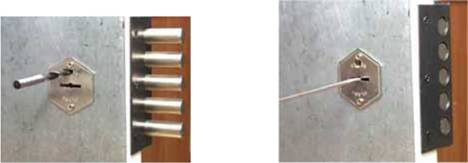
It is not harder to cope with the castle Mottura. We drill the rack in the place of attachment to the shank of the bolt (at an angle, i.e. bypassing the rack from drilling). The time spent is 5 minutes.
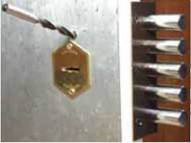
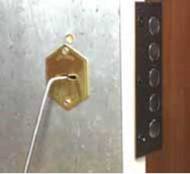
If, say, I publish templates for the most popular models of locks of the most famous firms, then the child can open them, armed with a drill and a piece of steel wire. I write this all so that you understand that you can not completely trust the locks and doors. Set the burglar alarm and the time taken to unlock your door will increase.
PRO pintles
I am often asked how to make skeleton keys, how to learn to unlock locks with skeleton keys. I will answer, why do it, they have already done it for you for a long time and have set up industrial production. All the master keys that you see in the photos are manufactured abroad in an industrial way. Their purpose is very diverse: they are for the police, for rescuers, firefighters, etc. However, they are available for free sale and everyone can buy them. Sets of master keys can be ordered through the Internet.
You see the picklocks that are used to unlock locks with a cylinder mechanism, they are also called locks with a profile cylinder. These are locks that unlock most easily, so I recommend starting training with these locks. To learn how to use them is very simple, for this, only it is necessary to imagine how such a mechanism works. The principles of operation of different types of locks are very clearly presented on the site of the "Hardware and Hardware Factory" where there are professionally produced flash movies showing the work of locks. Below, photographs of single master keys and sets for unlocking locks with a cylinder mechanism with one row of pins are given.
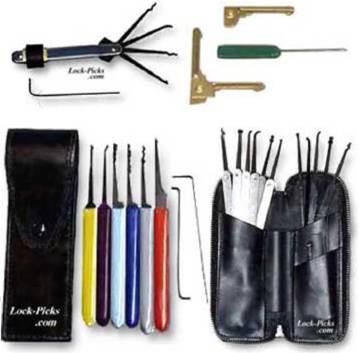
The principle of unlocking is as follows. In the keyhole, the "G" -shaped plate (they are visible in the photographs) is inserted into the top part and is created by means of its tightness (rotation) of the cylinder. But the cylinder does not turn; The spring pins prevent it. Next, the key hole is inserted into the keyhole and the pins are alternately lowered, without loosening the interference. At the same time, at some point in which the pins are drowned, there will be a small (millimeters) fraction of the rotation of the cylinder mechanism. Because of the error in drilling holes for the pins, and it is always, even in the most expensive locks, one (or several) pins when lowering, "hang out", i.e. No longer hamper the rotation of the cylinder, then, by clicking on the remaining pins in stages, we lower them all to the line of rupture (the pins consist, as a rule, of three parts) and rotate the cylinder one turn, then the operation is repeated again. You read this much longer than unlocking the castle. Of course it's better to see once.

But this is a mechanical "pistol" for unlocking locks with a cylinder mechanism, they can already unlock cylinders with two rows of pins. The principle of his work is the same. "Г" -shaped plate is made by tightening the cylinder, inserting a master key in the keyhole, which is fixed on the end of the "gun" and, by clicking on the "trigger", we hit the pins. When they fail, the cylinder rotates. "Pistol" has the adjustment of the amplitude of the movement of the master key, and the frequency of the strokes is adjusted by hand.

Well, this is already electrical devices, the same as the mechanical "gun", but for lazy ones they work from batteries. But in fact, it is much better than a mechanical analog, because it allows you to manipulate the master key in the key hole finely.
I myself used all these devices to unlock the locks. By the way, training began only when I got a mechanical "gun" in my hands. After that, I had an interest to unlock the castle with an old, "grandfather" way. I will say so, I unlocked the locks only for fun and in class with my experts and began to do it in a matter of seconds. The truth I unlocked the old domestic castles (they did not differ in the accuracy of production), but the current Chinese (including APEX). Well, now think, for how many seconds does a thief open your door?
Yes, you will be circumvented by the side!
Method one:
Two clips are taken, the first is completely unbent, and folds in half. After that, one half of it is bent several times, so that the bends form between each other no more than an acute angle, as shown in Scheme 1.

(Scheme 1)
Then you need to determine which side of the cylinders are located - the circuit 2, and insert the manufactured master key to the keyhole into the keyhole, bent the side to the cylinders and try to turn clockwise, with sharp but accurate movements, trying not to bend. If the attempt fails, repeat the entire operation again, but so that the "pattern" of the master key is not the same as the previous one.

(Figure 2)
Some useful tips:
Always watch from above or below there are cylinders, from this it usually depends in which direction to turn the master key. For example, if the cylinders are from above, as indicated in the diagram 2, then the master key must be turned counter-clockwise, and not vice versa. This type of locks are usually installed on office furniture (on drawers, cabinets, etc.). If the master key is not suitable for the lock you are currently opening, do not throw it away. It may still be useful to you, you have not approached this castle, you will come to another. For these purposes, I advise, to get you a special purse or something like that, where you will put up the picks you made at your leisure (you always carry this purse with you, just in case, there are cases because there are different cases).
Materials are taken from books, magazines, other sources, bought in e-shops, received by exchange. Provided are "AS IS" ("AS IS"); Check the performance of each is not possible. The site www.shram.kiev.ua works, rather, as a paid search system for interesting materials.
There are no materials on sale that contain warnings about the prohibition of its distribution (paid or free of charge). If you notice a copyright infringement (the sale of the material, for free distribution and sale of which its author did not give permission) - report, the material will be removed.




Comments
Commenting on, remember that the content and tone of your message can hurt the feelings of real people, show respect and tolerance to your interlocutors even if you do not share their opinion, your behavior in the conditions of freedom of expression and anonymity provided by the Internet, changes Not only virtual, but also the real world. All comments are hidden from the index, spam is controlled.